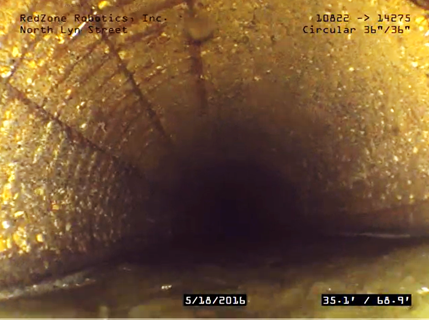Rosslyn Sanitary Sewer Relining
Location
1011 Arlington Blvd., Arlington, VA View Map
38.89537007789459, -77.06923416916733
1011 Arlington Blvd. ,
Arlington, VA
1011 Arlington Blvd. ,
Arlington, VA
Rosslyn Sanitary Sewer Relining
StatusOut to Bid
Location
The project limits are: 19th St. N & N Lynn St. to 1011 Arlington Blvd. (Riverplace Condominiums) View map
About the Project
Sanitary Sewer
The sanitary sewer system is a key piece of infrastructure consisting of approximately 465 miles of sewer pipes and 13 lift stations. This intricate network exists to make sure that the wastewater that gets flushed every day from homes and businesses makes its way to the Water Pollution Control Plant (WPCP) where it’s properly cleaned and treated before being recycled back into the environment. Learn more about our sanitary sewer system.
The project will rehabilitate approximately 2,300 linear-foot of the Rosslyn large diameter interceptor, ranging in size from 33” to 36” in diameter, via trenchless lining. The subject large diameter wastewater sewer serves the entire Rosslyn area, a heavily urbanized, high density area home to 13,000 residents, 25,000 working professionals, 1,000 businesses, and 2,200 hotel rooms. The project section of interceptor sewer was originally constructed as the Potomac Interceptor in the 1930s. The interceptor sewer was inspected in 2016, and many sections were deemed to require immediate rehabilitation due to structural deficiencies which allow for significant infiltration and inflow and could lead to structural failure.
Inspection
A CCTV inspection conducted in the spring of 2016 revealed that the sanitary sewer pipe had moderate-to-severe deterioration, including:
- Corrosion of concrete pipe
- Exposed aggregate
- Reinforcing steel exposed
- Pipe joint separation
- Infiltration at the joints
- Small cracks
CCTV shows severely exposed aggregate
CCTV shows pipe joint separation

CCTV shows exposed reinforcing steel in pipe
Project Process
Temporary Bypass
A temporary bypass will be installed in order to allow the pipe liner to push through the existing pipe without disruption from existing flow, and in order to allow the pipe liner to correctly adhere to the existing pipe walls and cure (harden) properly.
Due to the length of the project (approximately 2,800 linear feet total), there will be some sections where the bypass is above ground (along 19th Street N, N Kent Street, and the Riverplace Condominiums parking lot) and some sections where bypass will run underground (buried under street crossings – such as at N Lynn Street and Wilson Boulevard).
Cured-In-Place Pipe Process
Cured-in-place pipe (CIPP) is a trenchless rehabilitation process used to repair existing pipelines using a resin (styrene) saturated felt tube.
CIPP lining involves cleaning the interceptor sewer followed by installation of a resin-impregnated liner to provide structural integrity and reduce groundwater infiltrating into the sanitary sewer. The end result is that the liner functions as a structurally and hydraulically new pipe within the old sewer and there is very minimal open-cut excavation and disruption.

Crews place a flexible liner into the existing sewer. Heated water is forced into the liner, pushing the liner tightly against the existing sewer walls. The heat causes the liner material to “cure” (harden), creating a new pipe within the existing sewer that is free of cracks and holes. The renewed pipe longevity is projected to last 50-70 years.

Example of CIPP using hot water. A boiler truck uses water to cure the liner with a circulation pump.
Project Timeline
Fall 2025 to Spring 2026.
Photo Gallery
view as pdf